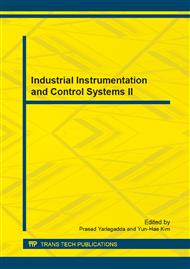[1]
Pedro J C, Maas S A. A comparative overview of microwave and wireless power amplifier behavioral modeling approach [J]. IEEE Trans. Microw. Theory Tech., 2005, 53(4): 1150-1163.
DOI: 10.1109/tmtt.2005.845723
Google Scholar
[2]
Isaksson M, Wisell D, Ronnow D. A comparative analysis of behavioral models for RF power amplifiers [J]. IEEE Trans. Microw. Theory Tech., 54(1), pp.348-359, (2006).
DOI: 10.1109/tmtt.2005.860500
Google Scholar
[3]
Saleh A., Frequency independent and frequency dependent nonlinear models of TWT amplifiers [J]. IEEE Trans. Commun., vol. 29, no. 11, pp.1715-1720, 1981. l. 332, pp.179-184.
DOI: 10.1109/tcom.1981.1094911
Google Scholar
[4]
Rapp C. Effects of HPA-nonlinearity on a 4-DPSK-signal for a digital sound broadcasting signal [C]. Second European Conf. on Sat. Comm., Liege, Belgium., 1991, 179-184.
Google Scholar
[5]
Ding L, Zhou G T, Morgan D R, et al. A robust digital baseband predistorter constructed using memory polynomials [J]. IEEE Trans. Commun., 2004, 52(1): 159-165.
DOI: 10.1109/tcomm.2003.822188
Google Scholar
[6]
Crespo-Cadenas C, Reina-Tosina J, Madero-Ayora M J. Volterra behavioral model for wideband RF amplifiers [J]. IEEE Trans. Microw. Theory Tech., 2007, 55(3): 449-457.
DOI: 10.1109/tmtt.2006.890514
Google Scholar
[7]
Yao K, Niu W, and Wang M. Adaptive RLS algorithm for rational function predistorter [C]. Asia-Pacific Microwave Conference, (2005).
DOI: 10.1109/apmc.2005.1606954
Google Scholar
[8]
Huang D, Leung H, Huang X. A rational function based predistorter for high power smplifier [C]. Proceedings of the 2004 International Symposium on Circuits and Systems, 2004: 1040-1043.
DOI: 10.1109/iscas.2004.1328376
Google Scholar
[9]
Mahil S., Sesay A. B. Rational function based predistorter for traveling wave tube amplifiers [J]. IEEE Trans. Broadcast., 2005, 51(1): 77-83.
DOI: 10.1109/tbc.2004.842519
Google Scholar
[10]
Hammi O, Ghannouchi F M, Vassilakis B. A compact envelope-memory polynomial for RF transmitters modeling with application to baseband and RF-digital predistortion [J]. IEEE Microw. Wireless Compon. Lett., 2008, 18(5): 359-361.
DOI: 10.1109/lmwc.2008.922132
Google Scholar
[11]
Nocedal J, Wright S J. Numerical optimization [M]. 2nd ed. New York: Springer, (2006).
Google Scholar


